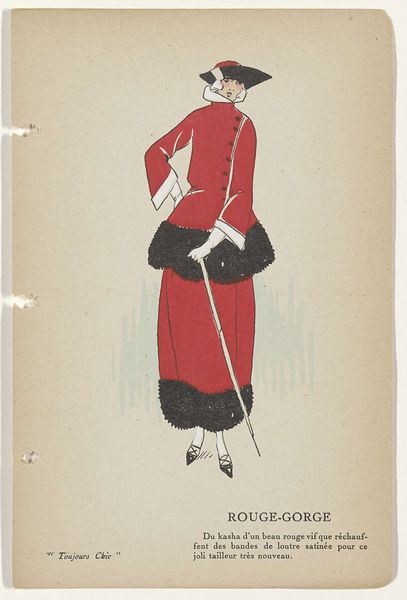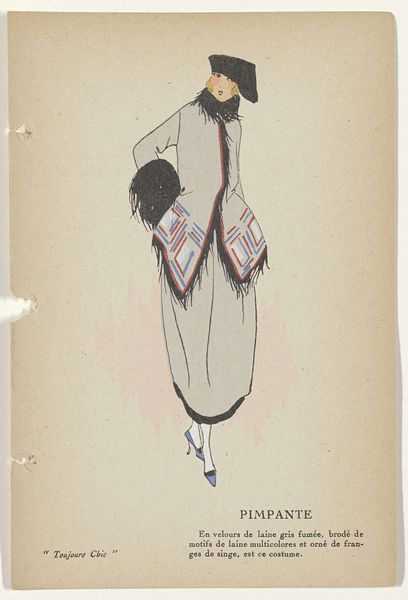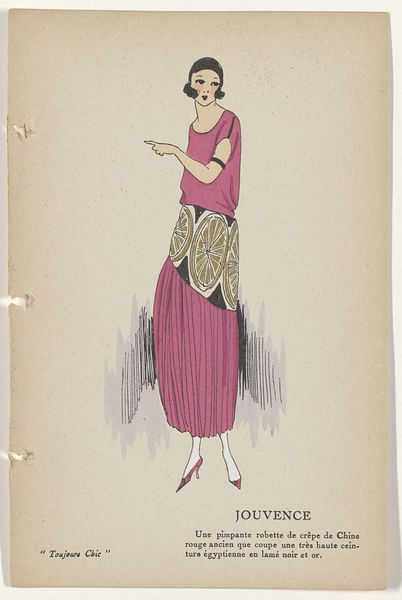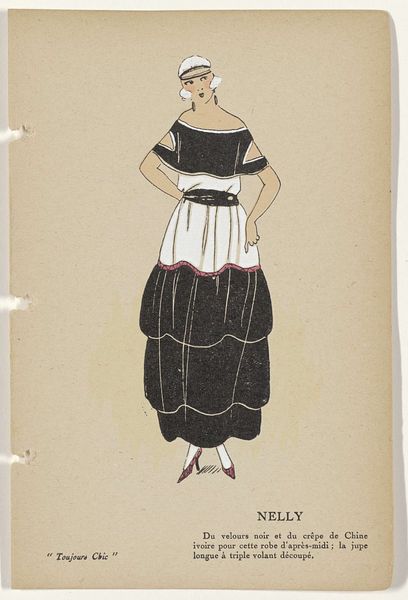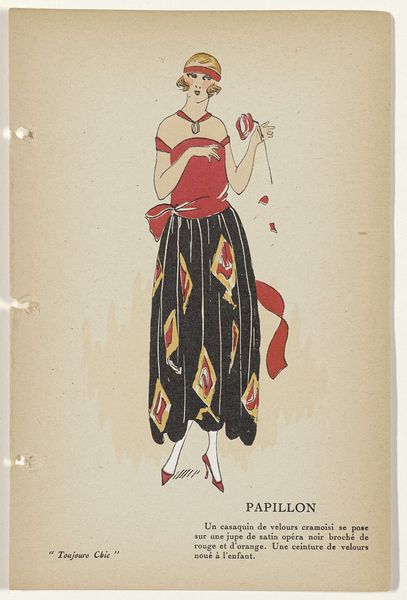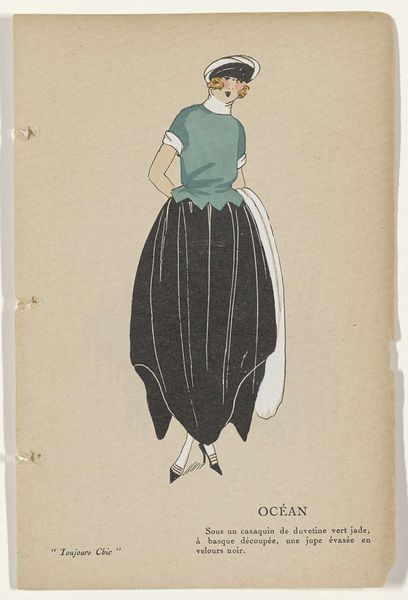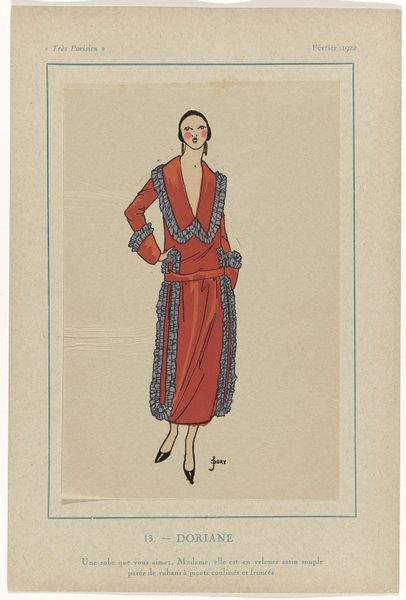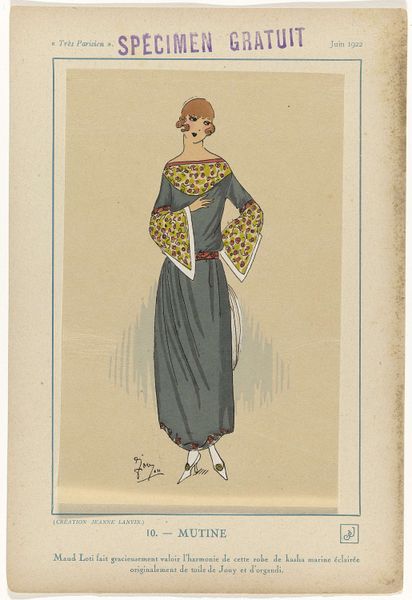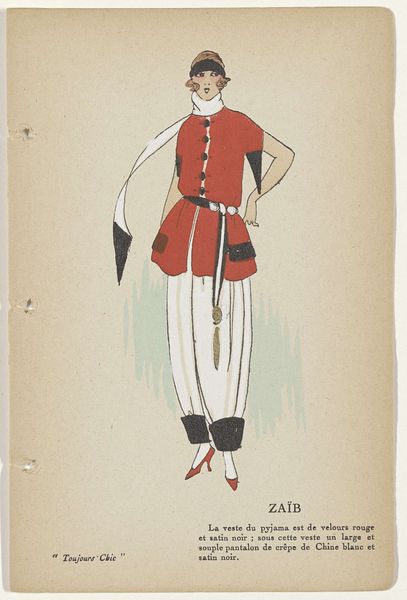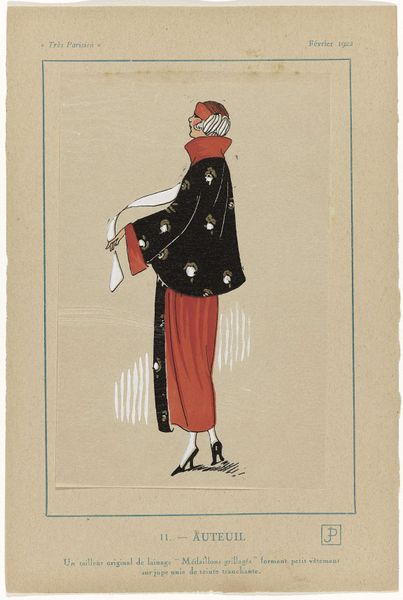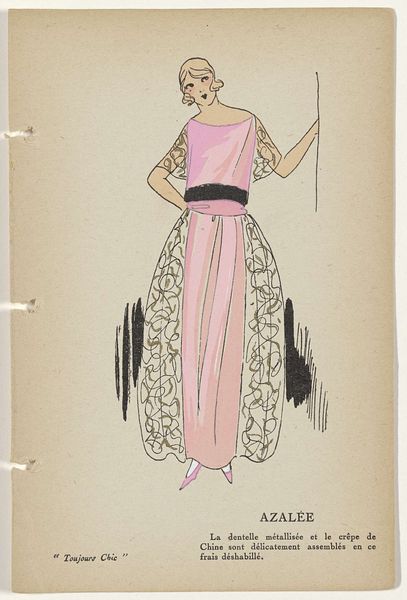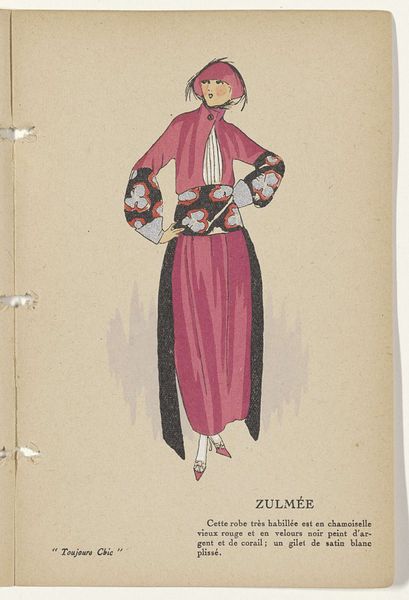
Dimensions: height 180 mm, width 120 mm
Copyright: Rijks Museum: Open Domain
Curator: This illustration, "Toujours Chic Les Robes, Hiver 1921-1922: Fedora" by G-P. Joumard, showcases a stylish woman in a red coat and patterned skirt. It’s an ink and watercolor drawing, part of the Rijksmuseum's collection. My initial impression is that the line work is just exquisite! It's so delicate. Editor: There’s a certain melancholy here, isn’t there? Despite the “chic” billing, there’s a distinct austerity. It reminds me of the artistic tension after World War I—a yearning for glamour restrained by a somber awareness. Look at her pose. There is no agency in it. The artist’s use of line, the repetition of patterns, seems to highlight societal expectations placed upon women. Curator: I'm struck by the textile rendering. Joumard truly captures the fluidity of the satin coat and contrasts it beautifully with the ornate lace skirt. Considering the context of fashion illustration, one has to examine the printing techniques used to produce and disseminate these images for a growing consumer class. How were these lines replicated en masse, and what impact did it have on the garment industry itself? Editor: Exactly! And considering that "Fedora" references a garment design, what sort of consumer was being targeted here? We need to contextualize the work through that intersectional lens. The choice of the 'Fedora' is a clue. How much freedom does it truly represent? It’s vital to explore what image of womanhood is being crafted, what narratives about the 'modern' woman are being sold? This all has to be viewed through gender, class, race. Curator: Joumard’s labor here becomes particularly fascinating: the drafting, inking, the considerations made regarding the printing and distribution to a potentially massive audience... each informs how the final product and design of "Fedora" is appreciated and digested. Editor: Agreed. And reflecting on "Fedora’s" display within the institution of the Rijksmuseum – its historic narratives and societal standing – we need to question how this single illustration interacts with our understandings of history and visual culture today. How does this work and its inherent values challenge our preconceptions, or reinforce them? Curator: I think that exploring the materiality, the techniques employed in reproduction, can unlock some interesting ideas, if not complete answers. Editor: Absolutely, and seeing it alongside other images of its time helps tell a complex, insightful story.
Comments
No comments
Be the first to comment and join the conversation on the ultimate creative platform.
